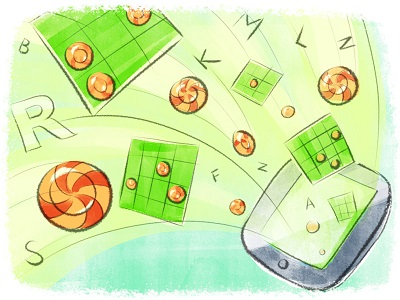302267: CF436C. Dungeons and Candies
Memory Limit:256 MB
Time Limit:2 S
Judge Style:Text Compare
Creator:
Submit:0
Solved:0
Description
Dungeons and Candies
题目描述
During the loading of the game "Dungeons and Candies" you are required to get descriptions of $ k $ levels from the server. Each description is a map of an $ n×m $ checkered rectangular field. Some cells of the field contain candies (each cell has at most one candy). An empty cell is denoted as "." on the map, but if a cell has a candy, it is denoted as a letter of the English alphabet. A level may contain identical candies, in this case the letters in the corresponding cells of the map will be the same. When you transmit information via a network, you want to minimize traffic — the total size of the transferred data. The levels can be transmitted in any order. There are two ways to transmit the current level $ A $ : 1. You can transmit the whole level $ A $ . Then you need to transmit $ n·m $ bytes via the network. 2. You can transmit the difference between level $ A $ and some previously transmitted level $ B $ (if it exists); this operation requires to transmit $ d_{A,B}·w $ bytes, where $ d_{A,B} $ is the number of cells of the field that are different for $ A $ and $ B $ , and $ w $ is a constant. Note, that you should compare only the corresponding cells of levels $ A $ and $ B $ to calculate $ d_{A,B} $ . You cannot transform the maps of levels, i.e. rotate or shift them relatively to each other. Your task is to find a way to transfer all the $ k $ levels and minimize the traffic.输入输出格式
输入格式
The first line contains four integers $ n,m,k,w $ $ (1<=n,m<=10; 1<=k,w<=1000) $ . Then follows the description of $ k $ levels. Each level is described by $ n $ lines, each line contains $ m $ characters. Each character is either a letter of the English alphabet or a dot ("."). Please note that the case of the letters matters.
输出格式
In the first line print the required minimum number of transferred bytes. Then print $ k $ pairs of integers $ x_{1},y_{1},x_{2},y_{2},...,x_{k},y_{k} $ , describing the way to transfer levels. Pair $ x_{i} $ , $ y_{i} $ means that level $ x_{i} $ needs to be transferred by way $ y_{i} $ . If $ y_{i} $ equals 0, that means that the level must be transferred using the first way, otherwise $ y_{i} $ must be equal to the number of a previously transferred level. It means that you will transfer the difference between levels $ y_{i} $ and $ x_{i} $ to transfer level $ x_{i} $ . Print the pairs in the order of transferring levels. The levels are numbered 1 through $ k $ in the order they follow in the input. If there are multiple optimal solutions, you can print any of them.
输入输出样例
输入样例 #1
2 3 3 2
A.A
...
A.a
..C
X.Y
...
输出样例 #1
14
1 0
2 1
3 1
输入样例 #2
1 1 4 1
A
.
B
.
输出样例 #2
3
1 0
2 0
4 2
3 0
输入样例 #3
1 3 5 2
ABA
BBB
BBA
BAB
ABB
输出样例 #3
11
1 0
3 1
2 3
4 2
5 1